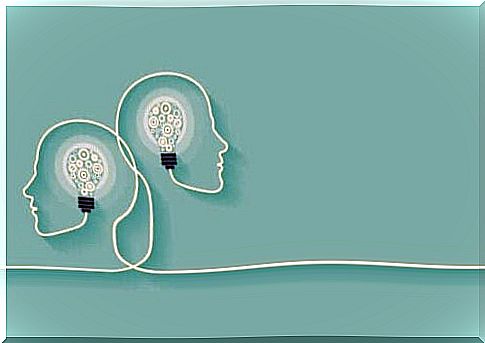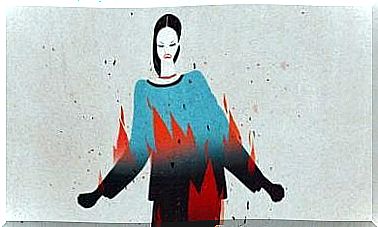Fast And Slow Thinking According To Daniel Kahneman

Are you aware of how your brain activates two different systems of thinking while performing your daily chores? Do you know how it goes when you make decisions? Although there are many psychological theories on this subject, one of them has been particularly influential : Daniel Kahneman’s theory of thinking.
Kahneman is a psychologist who received the Swedish Riksbank’s award in economic science in memory of Alfred Nobel in 2002. He wrote the best-selling Think, fast and slow, 2012. In it he describes a theory of two well-differentiated systems of thought; System 1 is more intuitive, fast and automatic, while System 2 is more thoughtful, logical and slow. What else is there to know about these systems? When do we use them? Do they interact with each other? Keep reading to find out this and more.

Fast and slow thinking according to Daniel Kahneman
Kahneman’s ideas about thinking are the subject of the book entitled Think, Fast and Slow . Daniel is a Jewish psychologist born in Israel and raised in the United States. Some today believe that he is one of the most important thinkers in the world. As we mentioned above, he won the Nobel Prize for his work on the rational decision model.
His ideas have influenced many areas of medicine, politics and economics. In his book, Daniel describes two types of thoughts or systems that model human thinking. System 1 is fast, intuitive and emotional, while System 2 is slower, thoughtful and logical.
System 1 (fast)
This system of thought is a fast, automatic and emotional system that also acts stereotypically and subconsciously. System 1 has the function of generating intuitions that can be useful for human tasks (although they are not always useful). This system is also known as an implicit system.
System 1 is also activated through intuition and heuristics. It helps you perform basic daily tasks, such as walking or brushing your hair. In addition, it connects new information with patterns that already exist in the mind, at least according to Kahneman. Thus, the mind does not create new patterns from each new experience, but instead connects new information with old information through it, and thus creates meaningful associations.
How is it activated?
People use System 1 to resolve most issues in our daily lives. This means that it enables us to make quick and easy decisions and draw automatic conclusions.
System 2 (slow)
According to Kahneman, the second system is slower and requires more effort. It is activated less often and is more logical than the previous one, as well as more calculating and conscious. That is, when we use System 2, we are fully aware that it is, for example, for the purpose of solving problems.
Its function is to make decisive decisions after considering and controlling the intuitions derived from System 1. In contrast, System 2 allows you to perform more complex tasks such as learning a language or reflecting on something.
How is it activated?
System 2 is thus there to make complex or difficult decisions. Therefore, it is a more conscious type of thinking. It is a system that requires more concentration because it handles complex tasks. We humans use this system to provide conscious answers.

Collaboration between the two systems of thinking according to Daniel Kahneman
These two systems of thought are continuously active in human everyday life and they communicate with each other. However, it is one of them that dominates the other in a given situation, depending on which task is to be handled.
Each of the systems has a function. Thus, while System 1 determines your thoughts in relation to the perception of the environment as well as the visual and associative memory, System 2 is responsible for creating conclusions from the intuition that came from System 1. This conscious system, ie. System 2, is useful when making complex decisions because it is slower and requires more concentration than System 1 (concentration is a key factor in decision making). That is why Kahneman refers to the second process in System 2 as a slow thinking.
In terms of interaction, System 1 has a greater influence on behavior when System 2 is busy.
In short, Daniel Kahneman believes that thinking is manifested through two systems of thought that work in the mind to make decisions and solve problems. But, as he pointed out in an interview, the common man does not reflect on which of the two systems dominates the other, and which thus for the most part controls our behavior.









